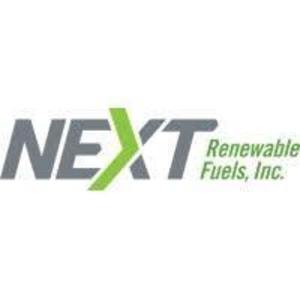Next Renewable Fuels receives key land use approval

March 24, 2022
BY Next Renewable Fuels
The Oregon Department of State Lands approved the Removal-Fill permit for Next Renewable Fuels’ $2 billion clean fuels project. The approval allows Next to build a renewable diesel facility that will reduce greenhouse gas emissions by 7 million tons each year and restore nearly 500 acres of wetlands to create habitat in the Columbia River corridor.
“This approval is a pivotal milestone for our clean fuels project and is a triumph for the local ecosystem,” said Chris Efird, chairman and CEO of Next. “Our project will reduce toxic emissions along the west coast, and our wetland restoration will convert hundreds of acres of a single-species tree farm into diverse habitat crucial for pollinators, local fauna and iconic species of Columbia County.”
The State of Oregon adopted the Climate Protection Plan in late 2021, emphasizing the need for cleaner fuel supplies like renewable diesel. The Next facility would be a cornerstone investment in making those clean fuel goals a reality. Renewable diesel is 60-80 percent cleaner than traditional petroleum diesel and can be used directly in current diesel fleets without any vehicle modifications. Renewable diesel is made by converting organic material, like used cooking oil, into fuel, and it costs the same at the pump.
The Oregon Department of State Lands received considerable comments from elected officials, thought leaders, business owners and local community members in support of Next’s project.
Advertisement
Advertisement
“We firmly believe that Next Renewable Fuels’ investment and its associated [wetland restoration] meet ODSL regulatory standards, provide statewide (and greater) economic benefit, and further Oregon’s clean energy and environmental policy objectives,” wrote Paul Vogel, executive director of Columbia Economic Team.
Dan Rocha, board secretary for the South Columbia County Chamber of Commerce, echoed those sentiments, “Next is not only meeting the stringent regulations set forth by ODSL, but they go above and beyond to protect and preserve our local water resources.”
Next worked with ODSL to identify potential wetland restoration areas, but ultimately the ODSL agreed the Columbia County site was best because of its unique ability to meet agency objectives – close proximity to the proposed project and consisting of one contiguous wetland property. Wetlands have numerous benefits for adjacent agricultural land, too, including natural flood control, better water filtration, pollinator habitat and removal of non-native species.
“The permit application is approved because the Department of State Lands has determined that…the proposed removal-fill activity is consistent with the protection, conservation, and best use of the water resources of this state,” said Christopher Castelli, northern operations manager for aquatic resource management at the Department of State Lands. “Use of this fuel as a replacement for non-renewable fuels will reduce greenhouse gas emissions and moves the State of Oregon toward meeting the Low Carbon Fuel Standards.”
The Oregon Department of State Lands isn’t the only state agency that believes Next meets stringent state criteria for its proposed clean fuels facility. Recently, Susan Barnes, Regional Wildlife Conservation Biologist for the Oregon Department to Fish and Wildlife stated, “The department believes this proposed renewable energy project is sited appropriately, and it is consistent with the department’s climate goals.”
Advertisement
Advertisement
Estimates show the Next facility would generate more than $45 million in annual tax revenue to the State of Oregon and Columbia County. Tax revenues could be used for public safety, libraries, veterans programs or other public services. The facility will create more than 3,500 green jobs during construction and more than 240 permanent green jobs during operation. Next has signed agreements with the Oregon Building Trades and Carpenters to hire skilled union labor for construction and remain neutral if the facility employees choose to unionize.
“Our commitments prioritize hiring locally and providing job training in the green fuels sector,” emphasized Chris Efird. “This project is a win-win-win for state policy goals, environmental preservation and green job creation.”
Next continues advancing through state and federal public permitting processes. For more information on the clean fuels project and wetland restoration proposal, visit www.Nextrenewables.com.
Related Stories
CountryMark on July 22 celebrated the completion of more than $100 million in upgrades at its refinery in Indiana, including those related to soybean oil storage. The facility produces renewable diesel via coprocessing technology.
ATOBA Energy and Air Moana are partnering to implement scalable solutions for the supply of SAF. The collaboration aims to ensure long-term SAF availability while supporting local initiatives to develop sustainable fuel production in Tahiti.
Neste Corp. on July 24 released second quarter results, reporting record quarterly renewable product sales volumes despite weaker margins. SAF sales were up nearly 80% when compared to the first quarter of 2025.
Valero Energy Corp. on July 24 released second quarter results, reporting a profitable three-month period for its ethanol segment. The renewable diesel segment posted a loss, but the company’s new sustainable aviation fuel (SAF) unit operated well.
The IRS on July 21 published a notice announcing the 2025 calendar-year inflation adjustment factor for the Section 45Z clen fuel production credit. The resulting adjustment boosts maximum the value of the credit by approximately 6%.
Upcoming Events










